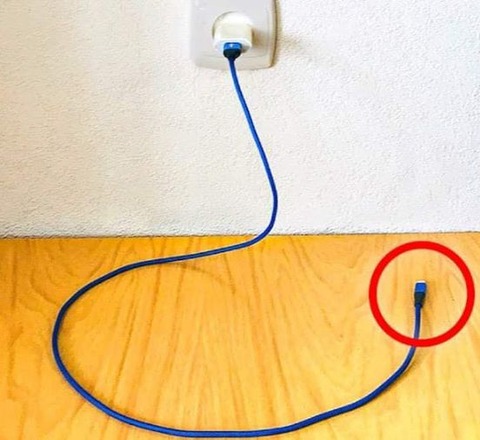In today’s technology-driven world, it’s common to see phone chargers perpetually plugged into outlets, even when they’re not actively charging a device. This habit seems harmless at first glance—after all, how much energy can a tiny charger possibly consume when it’s not in use? However, experts warn that leaving your charger plugged in without your phone connected isn’t as insignificant as it appears. This seemingly minor habit has implications for energy consumption, fire safety, electricity bills, and even the environment. Understanding these factors can help you make informed decisions and reduce unnecessary risks in your home.

First, let’s talk about the power draw of an idle phone charger. Even when it’s not charging a phone, a plugged-in charger continues to consume electricity. Tests conducted on a genuine Apple phone charger reveal that it uses approximately 130 watts of power each month when left plugged in without a phone attached. Over the course of a year, this adds up to roughly 1.5 kilowatt-hours. While that might sound like a small amount, the collective energy usage grows significantly when you consider the number of chargers left plugged in across households, offices, and public spaces worldwide. Furthermore, not all chargers are created equal. Off-brand and counterfeit chargers are often far less efficient, sometimes consuming 10 to 20 times more power than certified chargers. The environmental impact of millions of idle chargers drawing electricity around the clock cannot be overlooked. This unnecessary energy usage contributes to higher carbon emissions and puts additional strain on power grids.
Another significant concern is fire safety. Although modern chargers from reputable brands must pass strict safety standards before hitting the market, they are not entirely risk-free. An idle charger can overheat, especially if it’s covered by items like clothes, bedding, or paper. The risk increases exponentially with cheap, non-branded chargers, which are often made with substandard materials and lack essential safety features. While energy expert Glenn LaMay assures that certified chargers generally pose minimal risk when left plugged in, the same cannot be said for knockoff versions, which have been linked to house fires in multiple documented cases. Over time, electrical components inside chargers can degrade, further increasing the likelihood of malfunctions and overheating. It’s a small but real risk that can easily be avoided by simply unplugging the charger when it’s not in use.
Financially, leaving your phone charger plugged in can have an impact on your electricity bills, albeit a subtle one. While a single charger might not significantly drive up your monthly costs, the cumulative effect of multiple chargers operating continuously across a household adds up over time. On average, a single idle charger costs about $0.07 per year to run, which seems almost negligible. However, in households where multiple chargers are plugged in year-round, the cost can creep up to several dollars annually. More importantly, this unnecessary expense reflects wasted energy—money essentially being thrown away for no benefit. When multiplied across millions of households, this waste represents millions of dollars in avoidable energy costs.
Beyond personal finances, the environmental consequences of wasted electricity are substantial. Every bit of energy we consume contributes to pollution, especially in regions where electricity is generated from non-renewable resources like coal or natural gas. Idle chargers pulling electricity day and night may seem insignificant on an individual level, but their collective impact on carbon emissions and environmental sustainability is undeniable. As global conversations around energy efficiency and environmental responsibility grow louder, simple changes—like unplugging your charger when it’s not in use—can play a meaningful role in reducing unnecessary waste.
Moreover, chargers for other devices, such as power tools or older electronic equipment, are often far less efficient than modern smartphone chargers. These older models are notorious for drawing significant amounts of electricity even when not in active use. Taking inventory of your household chargers and unplugging those that are outdated or rarely used is a practical step toward reducing energy waste.
The good news is that addressing this issue doesn’t require significant effort or investment. Simple changes can make a big difference. First and foremost, make it a habit to unplug your charger when it’s not in use. If manually unplugging every time feels inconvenient, consider investing in smart outlets or power strips that allow you to cut power to multiple devices with a single switch. These smart solutions also offer the added benefit of remote control through smartphone apps, allowing you to monitor and manage your energy consumption even when you’re not home. Additionally, always choose high-quality, branded chargers from reputable manufacturers. While they may cost slightly more upfront, they are built to higher safety and efficiency standards, reducing both energy waste and fire hazards.
In a world where our reliance on electronic devices is only increasing, small changes in our habits can add up to significant benefits. Unplugging your charger when it’s not actively charging your phone might seem trivial, but it contributes to lower electricity bills, reduces the risk of fire hazards, minimizes energy waste, and supports broader environmental sustainability goals. Every little action counts, and collectively, these small steps can lead to meaningful change. So, the next time you unplug your phone, take an extra second to unplug the charger, too. It’s a tiny habit that carries a big impact for your wallet, your home’s safety, and the planet we all share.





